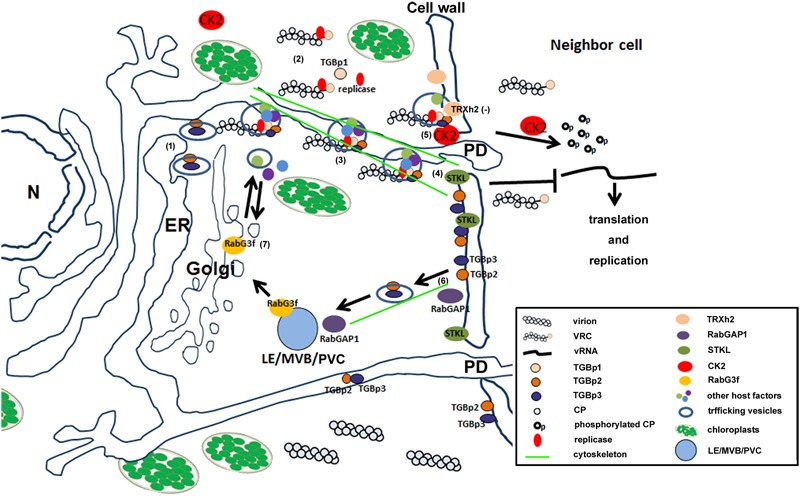FIGURE 2.

A schematic view of the hypothetical model for BaMV movement. The intracellular trafficking of BaMV movement complex is proposed to form the vesicle and trafficking through the cytoskeleton toward the plasmodesmata (PD). The steps of the BaMV movement are illustrated as (1) the movement proteins of BaMV, TGBp2 and TGBp3, are synthesized on the endoplasmic reticulum (ER) and transported via vesicles possibly regulated by one of the Rab-GTPases; (2) the newly synthesized viral RNA is assembled with the capsid protein (CP), movement protein TGBp1, and the viral replicase to form a competent viral replication complex (VRC); (3) the VRC and possibly some other host factors are recruited to TGBp2/TGBp3-containing vesicle to form a movement complex and trafficking toward the PD; (4) the host factor STKL localized on the plasma membrane might control the gate of the PD; (5) the host factor CK2α targeting the CP of VRC and release the vRNA from the VRC to the neighbor cell for further translation or replication; (6) TGBp2 and TGBp3 are released from the movement complex after disassembly on the PD and might shuttle back from the plasma membrane to late endosome/multivesicle bodies/prevacuolar compartments (LE/MVB/PVC) with the help of RabGAP1 to activate the Rab (unidentified yet); (7) RabG3f is possibly involved in shuttling the viral movement proteins back to Golgi and ER. One of the host factors, TRXh2, is shown to play a negative role indicated as (-) in hindering the movement through the interaction with viral movement protein TGBp2.
